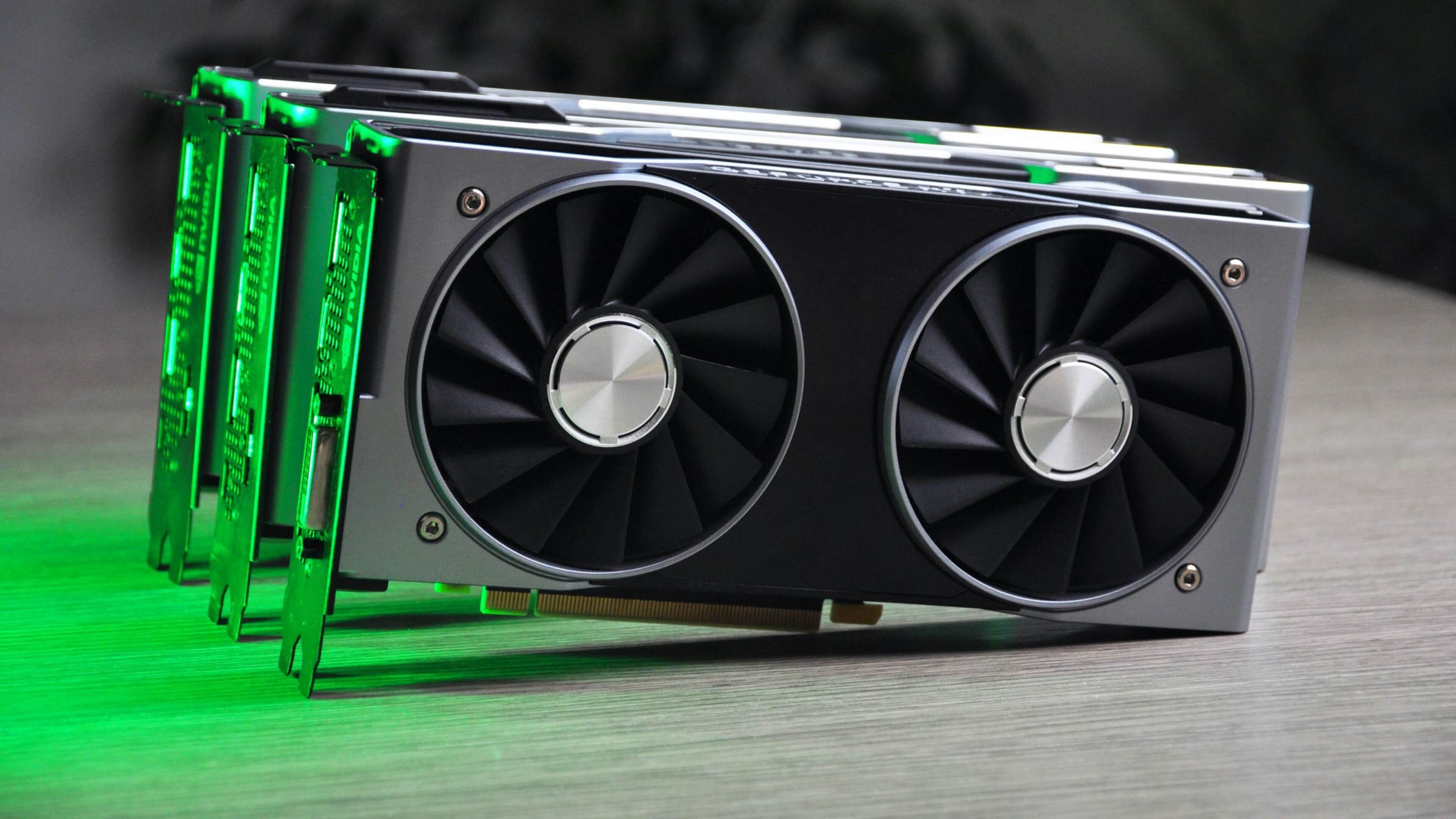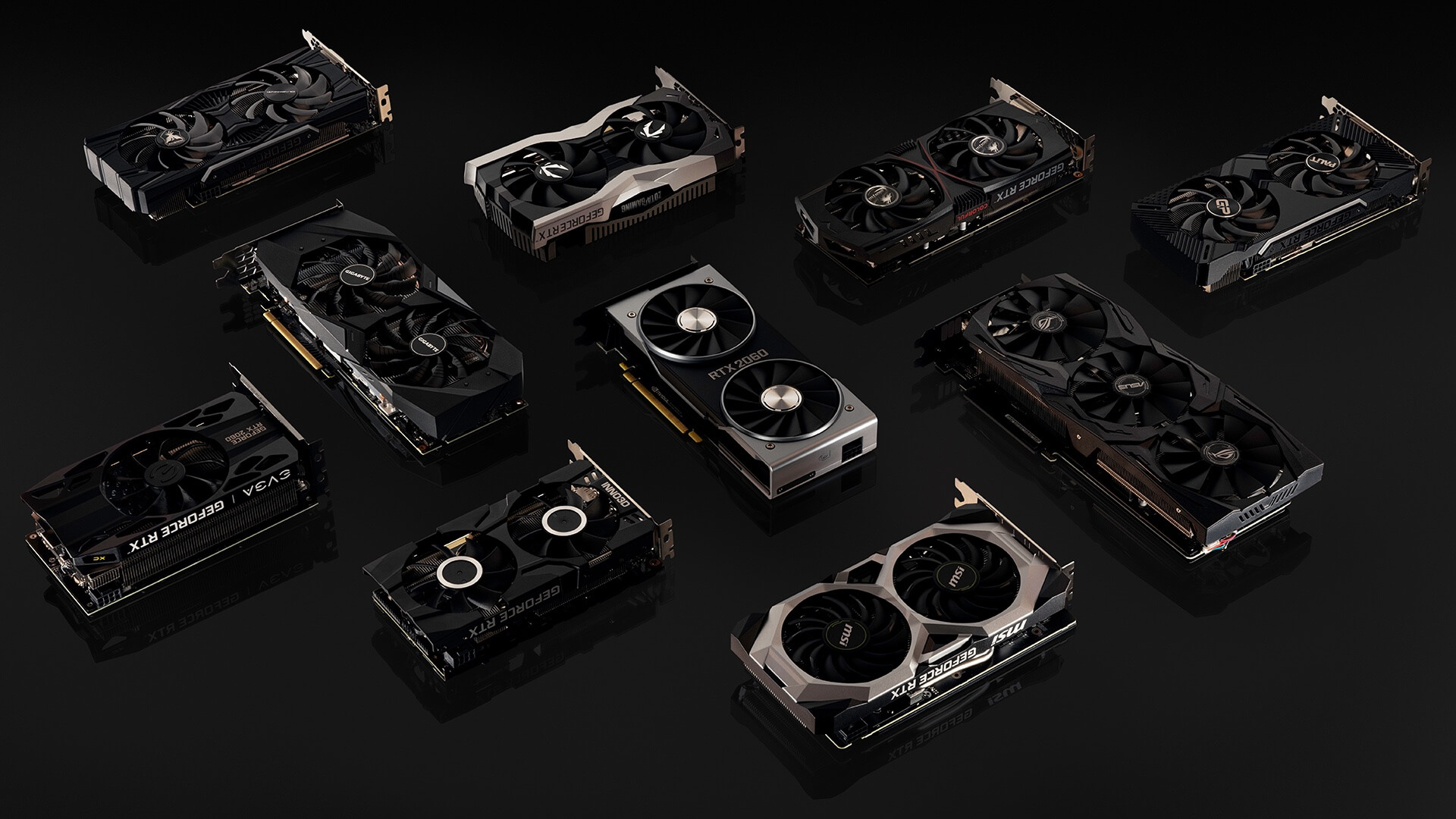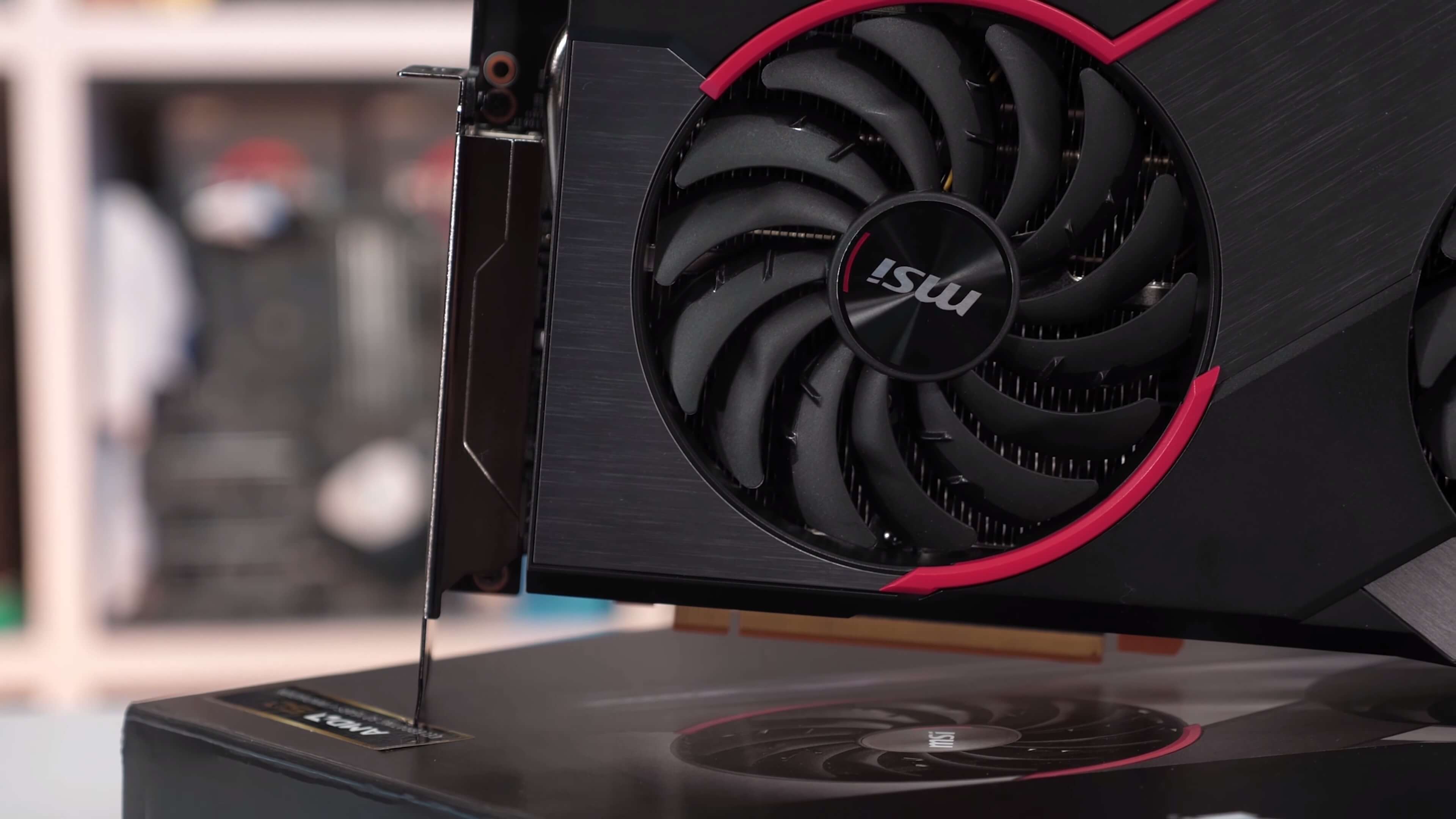We've got yet another big game benchmark for you, this time comparing the GeForce RTX 2060 Super to the Radeon RX 5700 XT. A week ago we compared the standard RX 5700 (non-XT model) to the RTX 2060 Super, that is a $350 Radeon GPU vs. a $400 GeForce GPU.
Even though we made this difference abundantly clear and focused on cost per frame when drawing comparisons, some of you were genuinely interested in why that comparison was made and felt the 5700 XT would have been a better matchup given the identical pricing. Fair enough. Coming from that article however, it should be said, it was the more affordable AMD GPU that offered the better value by a slim margin. Per our conclusion, we don't believe ray tracing support is a strong selling point for the RTX 2060 Super as it's simply not powerful enough to take full advantage of the feature.
In an effort to please everyone however, here's an apples to apples comparison of the two top $400 GPUs currently in the market. We expect these GPUs to remain among the most interesting mainstream graphics cards you can buy these holidays and beyond. With enough benchmark data, if pricing fluctuates considerably in the months to come you will always have this guide to choose the right GPU for the games you like to play the most.
There won't be any surprises here, so we'll quickly blast through the results before getting to the big breakdown graphs where we can look at all 41 games tested.
Representing AMD we have the PowerColor Red Devil 5700 XT and for Nvidia we have the MSI RTX 2060 Super Gaming X. Our Core i9-9900K GPU test rig has been used, overclocked to 5 GHz as usual, featuring 16GB of DDR4-3400 memory. All testing took place at 1080p and 1440p.
Benchmarks
We'll start with Borderlands 3 and given this is a title where the 5700 beat the 2060 Super, it should come as little surprise that the XT is even faster, beating the GeForce GPU by a 25% margin at 1440p.
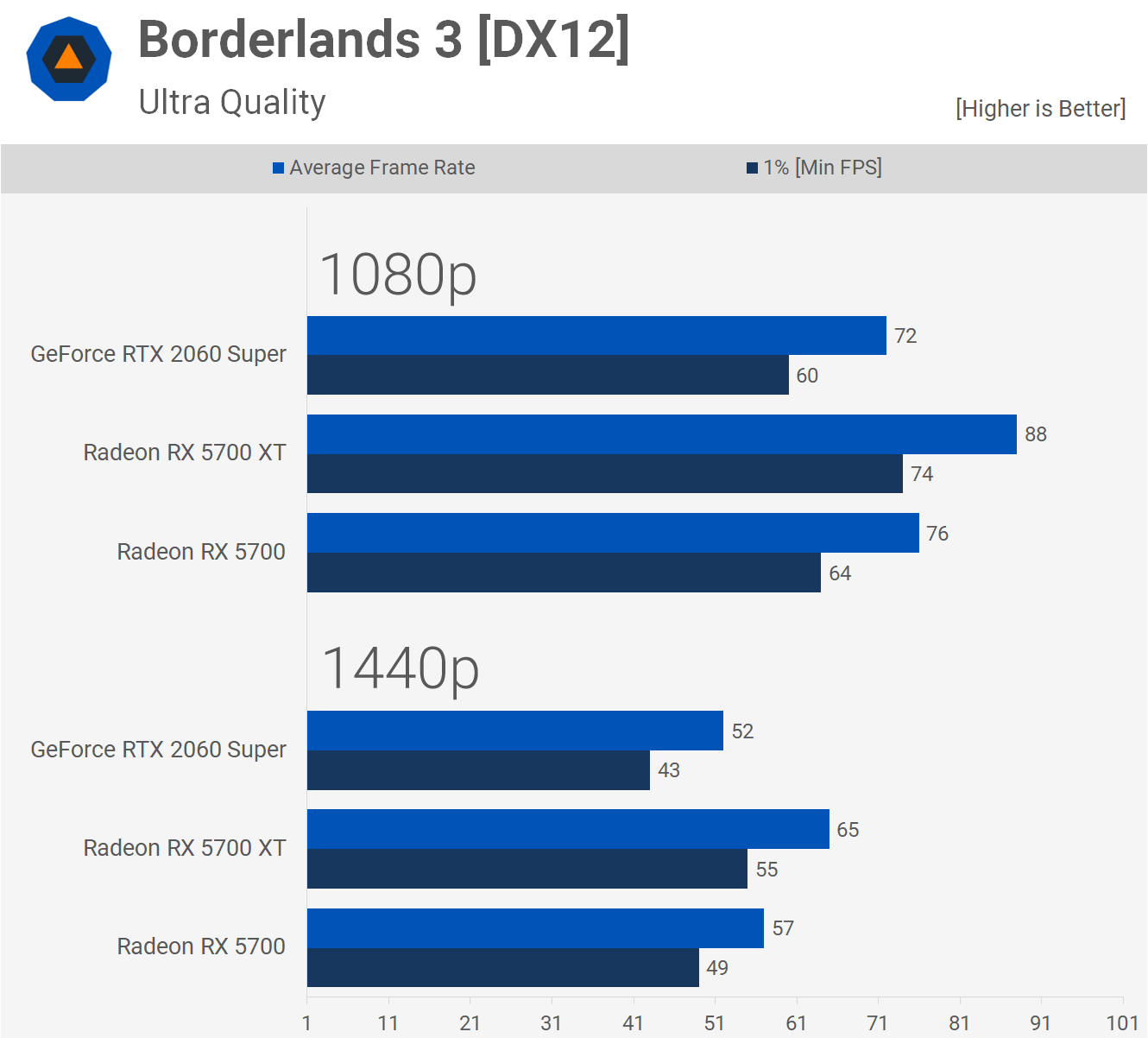
The Gears 5 results are a bit interesting, at 1080p the 5700 XT is 14% faster than the standard 5700, but at 1440p it was just 9% faster. We suspect memory bandwidth is the issue at the higher resolution. Whereas the XT was 24% faster than the 2060 Super at 1080p, it was just 15% faster at 1440p, though that's still a decent margin.
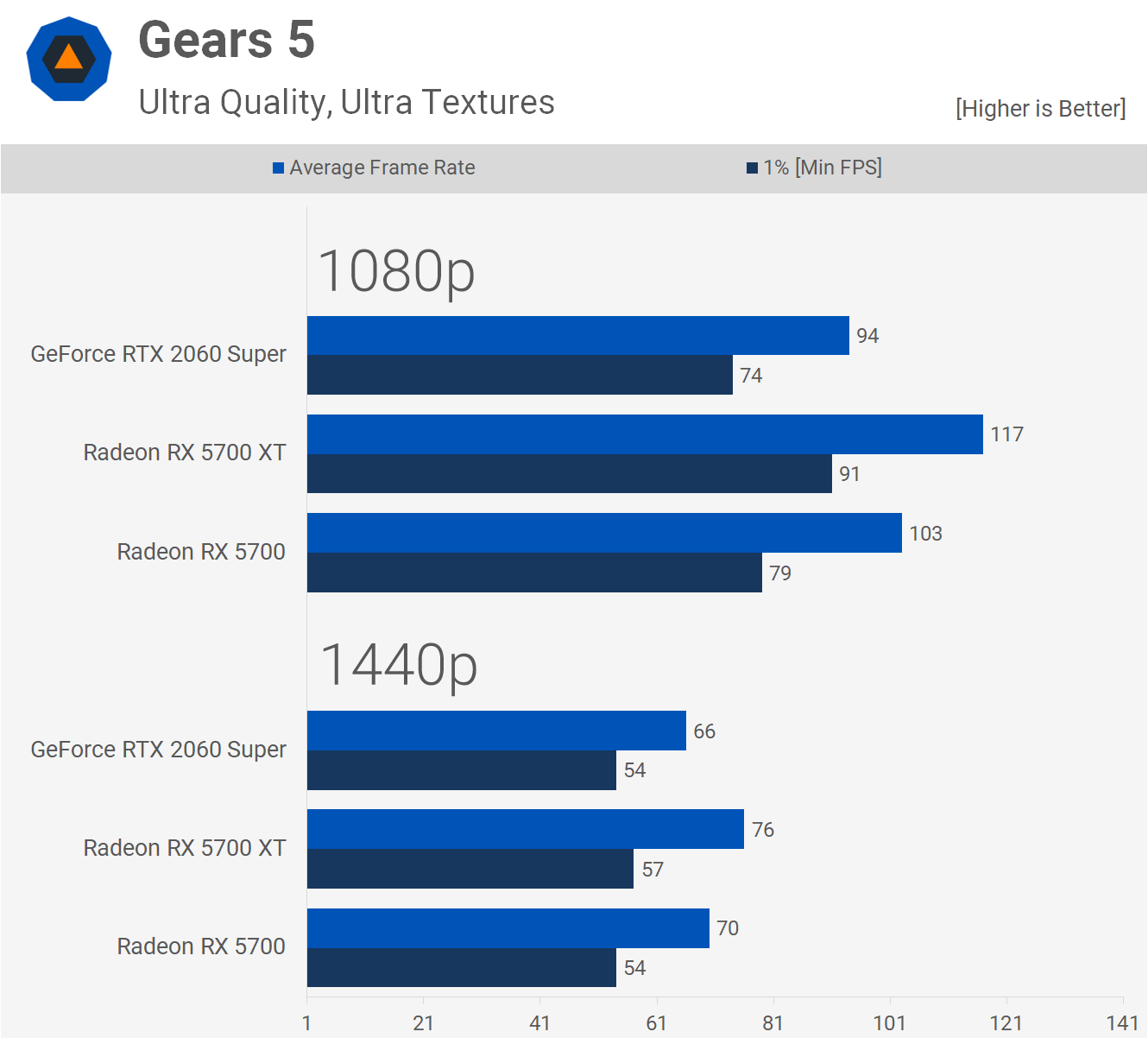
The 5700 was on par or slower than the 2060 Super when testing with Ghost Recon Breakpoint, but the XT model has a clear performance advantage, offering 12% more performance at 1080p and a whopping 25% more at 1440p.

Here we see a 12% performance boost for the XT over the standard 5700 when testing with Forza Horizon 4. That meant it was 21% faster than the 2060 Super. We see a similar performance margin at 1440p as well, here the Radeon 5700 XT beat the GeForce by a 19% margin.

Moving on to World War Z and given the 5700 was already faster, this one's an easy win for the 5700 XT as it beat the RTX 2060 Super by 26% at 1080p and 1440p.

The 5700 XT offers 13% more performance at 1080p and 17% more at 1440p. Another easy win for AMD in Battlefield V.

In Apex Legends the margins are much tighter. There's only 5 fps in it at both tested resolutions, but the 5700 XT remained on top.
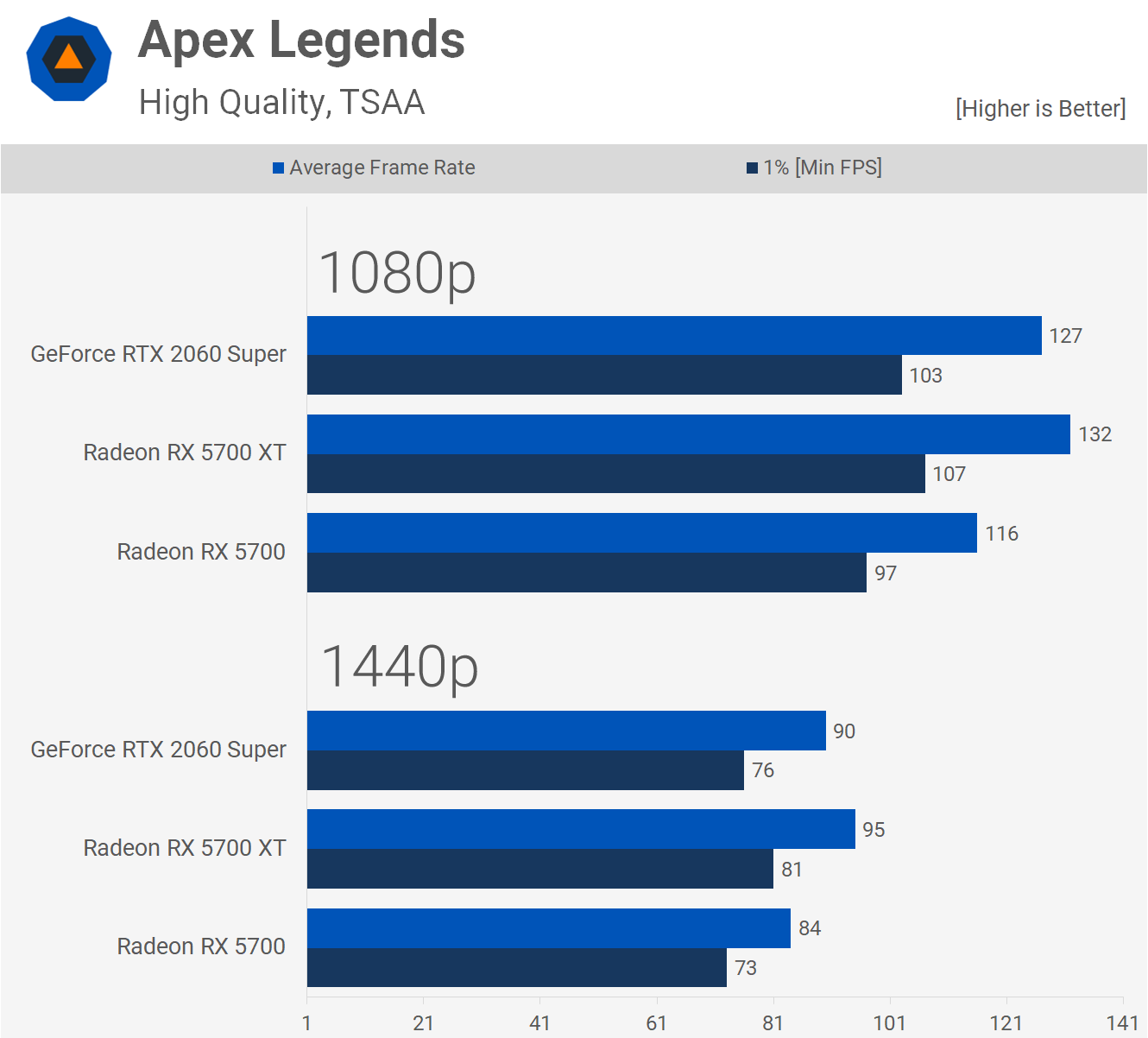
AMD is dominant in Counter-Strike: Global Offensive, so if you're after maximum fps the 5700 XT is the way to go at the $400 price point offering ~30% more performance at 1440p.
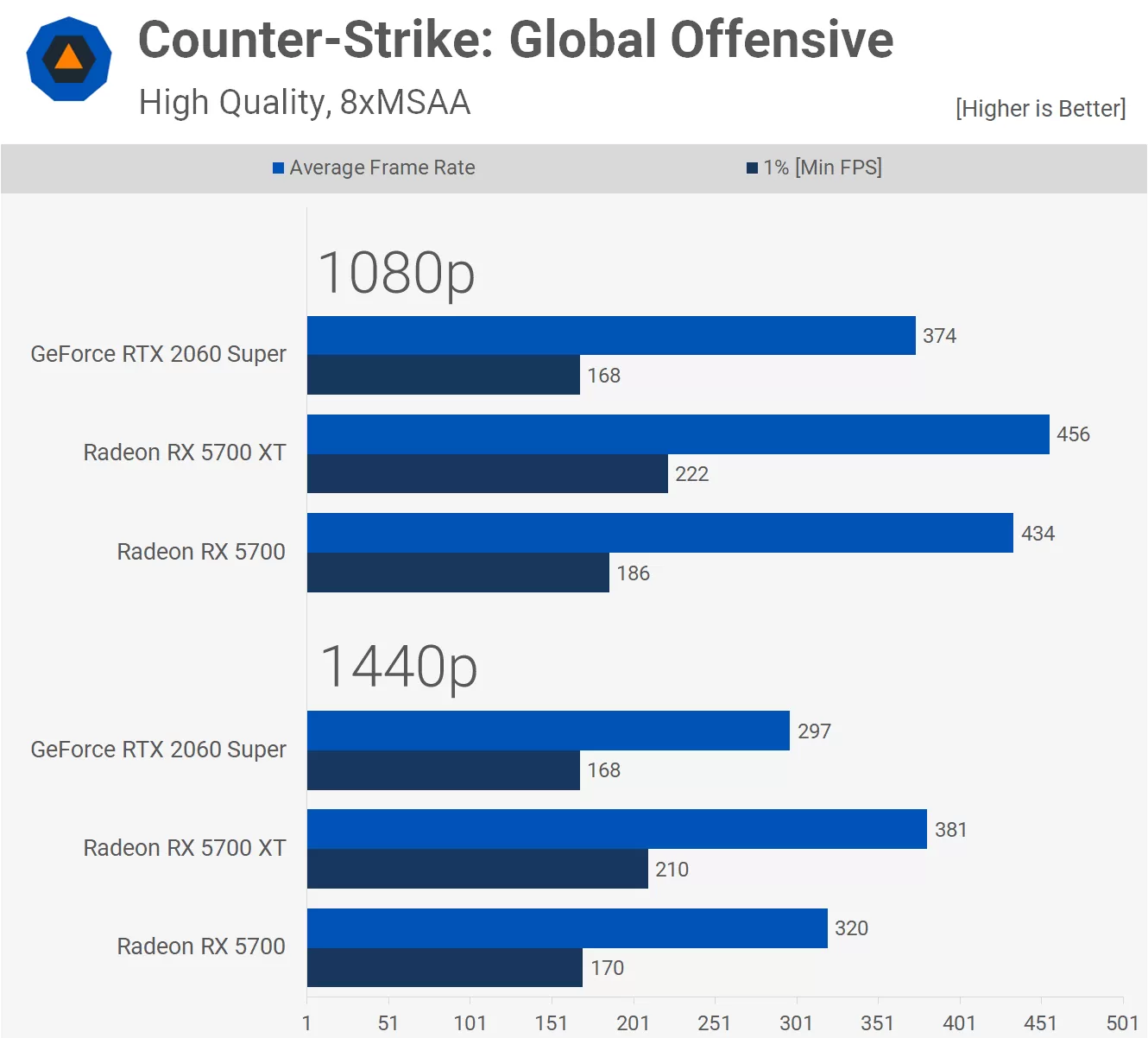
F1 2019 saw the 5700 and 2060 Super deliver comparable performance at both tested resolutions and this allowed the XT model to provide 11% more frames at 1080p and 15% more at 1440p.

In The Witcher 3, the 5700 XT was 9% faster at 1080p and 8% faster at 1440p against the RTX 2060 Super. It also offered considerably stronger 1% low performance at the higher resolution.
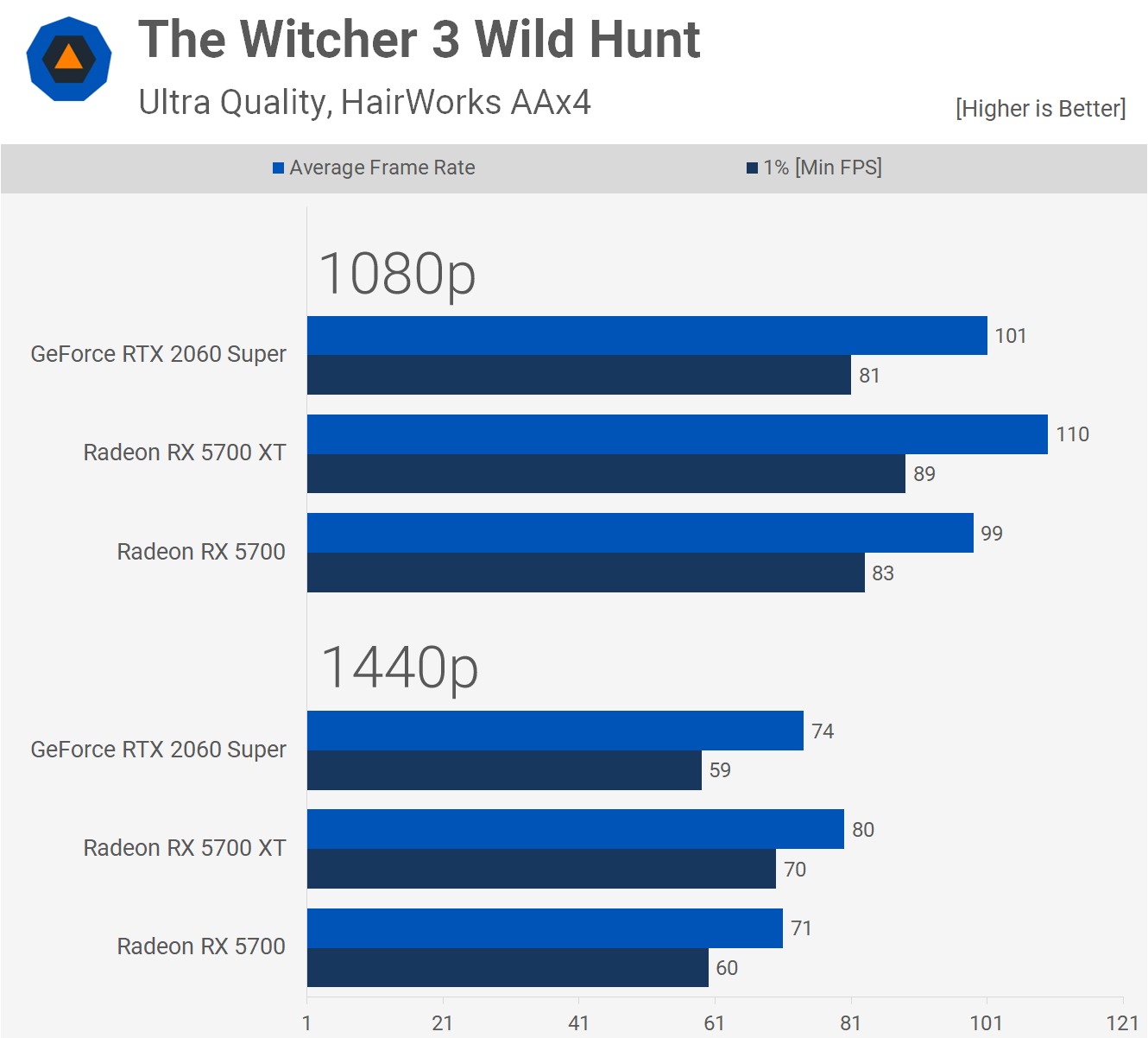
Wolfenstein: Youngblood serves another example where the RX 5700 was slower than the 2060 Super, but the XT model is able to correct that, winning by a 6% margin at 1080p and 8% at 1440p.
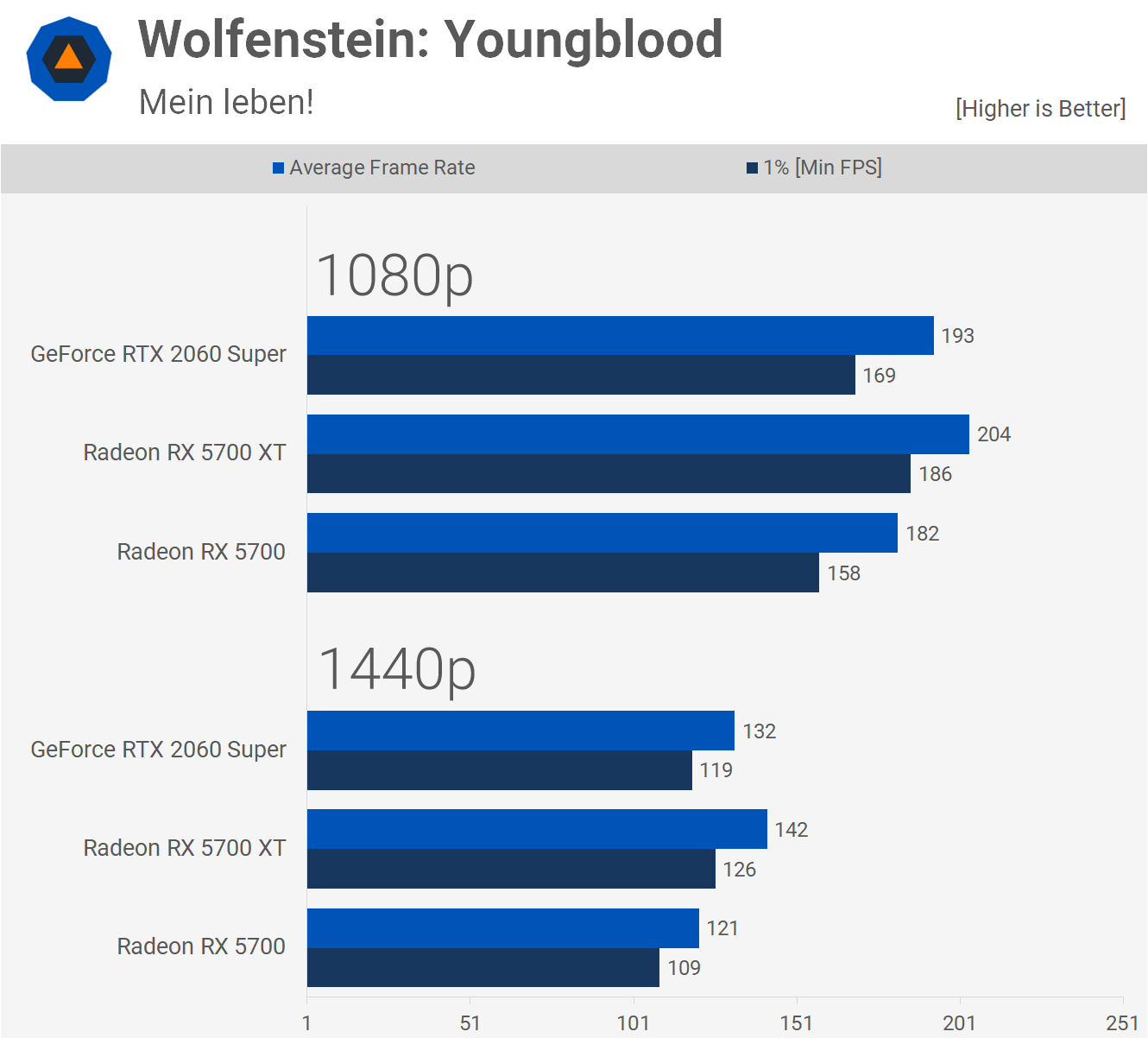
We recently published an all encompassing Fortnite Season 2 benchmark covering a wide range of GPUs. These are the results for the 5700, 5700 XT and 2060 Super, one of those rare instances where the GeForce GPU matches the 5700 XT.

Strange Brigade has been a strange game for AMD. For a long time they dominated this title but now it's Turing-based GPUs from Nvidia that offer more consistent performance. The 2060 Super was slower than the 5700 XT when comparing the average frame rate, but it did offer better 1% low performance. Overall, the gaming experience was much the same using either GPU.

The 5700 XT makes up a lot of ground on the 2060 Super in PlayerUnknown's Battlegrounds and despite being a little slower at 1080p, the Radeon GPU takes over at 1440p by a slim margin.
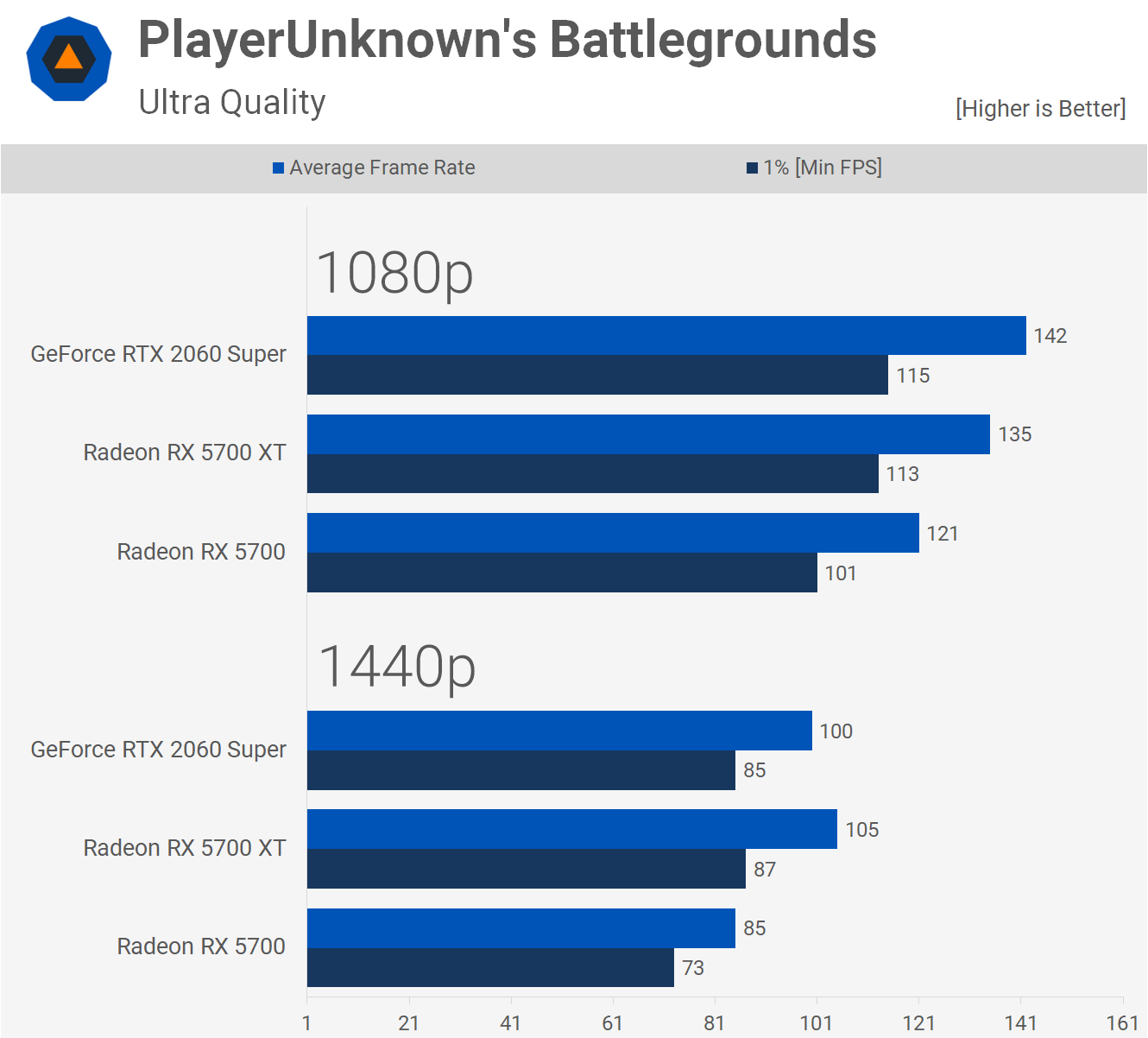
Even when testing with Project Cars 2, a game that typically favors the green team, the 5700 XT is able to beat the 2060 Super. This time by an 11% margin at 1080p, and just 6% at 1440p.

Last we take a look at World of Tanks where the 5700 XT is able to edge out the 2060 Super, though it's a little down at 1440p when looking at the 1% low performance.

Full Game Breakdown
That wasn't close. Yet we're keen to see how the 5700 XT and 2060 Super stack across all 41 games. Consider the GeForce was only ~4% faster than the standard 5700 in our recent comparison.
At 1080p, the GeForce RTX 2060 Super was ~9% slower on average against to the Radeon RX 5700 XT. Not only that, but the 5700 XT was the more consistent performer, coming up short in only 3 of the games tested. The 2060 Super won by more than a 5% margin in a single title. Meanwhile, it was slower by more than a 5% margin in 28 of the 41 games tested. It was also slower by a 10% or greater margin in 20 games. A convincing win for the 5700 XT.

The 1440p results paint much the same picture, in fact we'd argue the 5700 XT looks better here despite the average dropping by a percent. The 2060 Super was now at best just 3% faster, with insignificant wins in two titles and matching performance in 3 more titles.
For the rest of the pack, the RTX 2060 Super was slower by a 10% or greater margin in 17 of the 41 games tested.

Here's a quick look at cost per frame and as you can see in terms of value the 5700 and 5700 XT are the same using our 1440p data. In other words, at 1440p you'll be paying an 11% price premium for the RTX 2060 Super over either of the 5700 series GPUs. Then at 1080p the 2060 Super costs 12% more per frame over the 5700 and 10% over the 5700 XT.

Wrap Up: Buy Radeon for the raw performance, buy GeForce for...
If you're looking for maximum value it's the Radeon RX 5700 series that delivers. As you just saw the 5700 XT offers at least 10% more bang for your buck when compared to the RTX 2060 Super. Value-wise it's an open and shut case, get the 5700 XT and enjoy the extra frames, or save a little money and get the non-XT model which can be tuned up for 5700 XT-like performance.
With that said, what are some of the reasons why you might opt for the RTX 2060 Super instead?
For one the 2060 Super consumes less power, and it'll reduce total system consumption by at least 10%, but it's also 10% slower. Not exactly an efficiency improvement there, and don't expect to notice that difference on your power bill, but typically you're looking at a 25% reduction in consumption for the graphics card itself, and that means most 2060 Super cards will run cooler and quieter. Make sure you pick up a model that comes well equipped out of the box. Both the MSI Gaming X and PowerColor Red Devil run very quiet.
Another reason you'd buy the 2060 Super would be for video encoding, either as a content creator or as someone who streams gameplay and you want your graphics card to do the heavy lifting. Nvidia's encoder is significantly better in terms of quality and right now it's a lot faster. You're looking at a 25-35% performance uplift over the 5700 XT in applications such as DaVinci Resolve and Adobe Premiere. So while the focus of this feature was on gaming performance, if your needs go beyond just gaming, the 5700 series might not be the best choice.
AMD can certainly improve Navi's video encoding performance, but they'll need to work on that at the driver level and we're not confident we'll see that jump any time soon.
Speaking of drivers, this is the third and final reason why you might be better off with the RTX 2060 Super. We've seen numerous reports from alleged 5700 series owners complaining about driver issues. We've run into very few of these and overall it's hard to say how widespread these issues are and what the cause is. At least based in our own experience, AMD's current driver support doesn't give us enough reason to second guess recommending either the 5700 or 5700 XT.
On the gaming side, the RTX 2060 Super also has the advantage of ray tracing support, at least on paper. In reality though, the list of ray tracing-enabled games is very short, but most importantly, the performance in those games is horrible. Nvidia says the best implementation of this technology so far can be seen in "Control" and we'd generally agree with that.
Thing is though, at 1080p you won't even average 60 fps using a 2060 Super with high-quality ray tracing. DLSS can help here and the DLSS implementation used in this game does look good, it also doesn't use the Tensor cores which is mildly amusing, but at least it's not a blurry mess and with DLSS enabled you can push over 60 fps at 1080p, so that's something.
Those wanting to play Control at the more suitable 1440p resolution for a $400 graphics card, you'll be lucky to see over 50 fps with DLSS enabled. It's still playable but not exactly the experience we're after with a semi-premium graphics card purchase. In short, the 2060 Super is a little over 70% faster with ray tracing disabled and while the effects do look nice, they simply aren't worth that kind of performance hit in our opinion.
Bottom line, had Nvidia introduced the 2060 Super at the same $350 price point as the original RTX 2060, it'd be a clear win for the green team, but for pure gaming you're just better off with a Radeon 5700 series graphics card.
